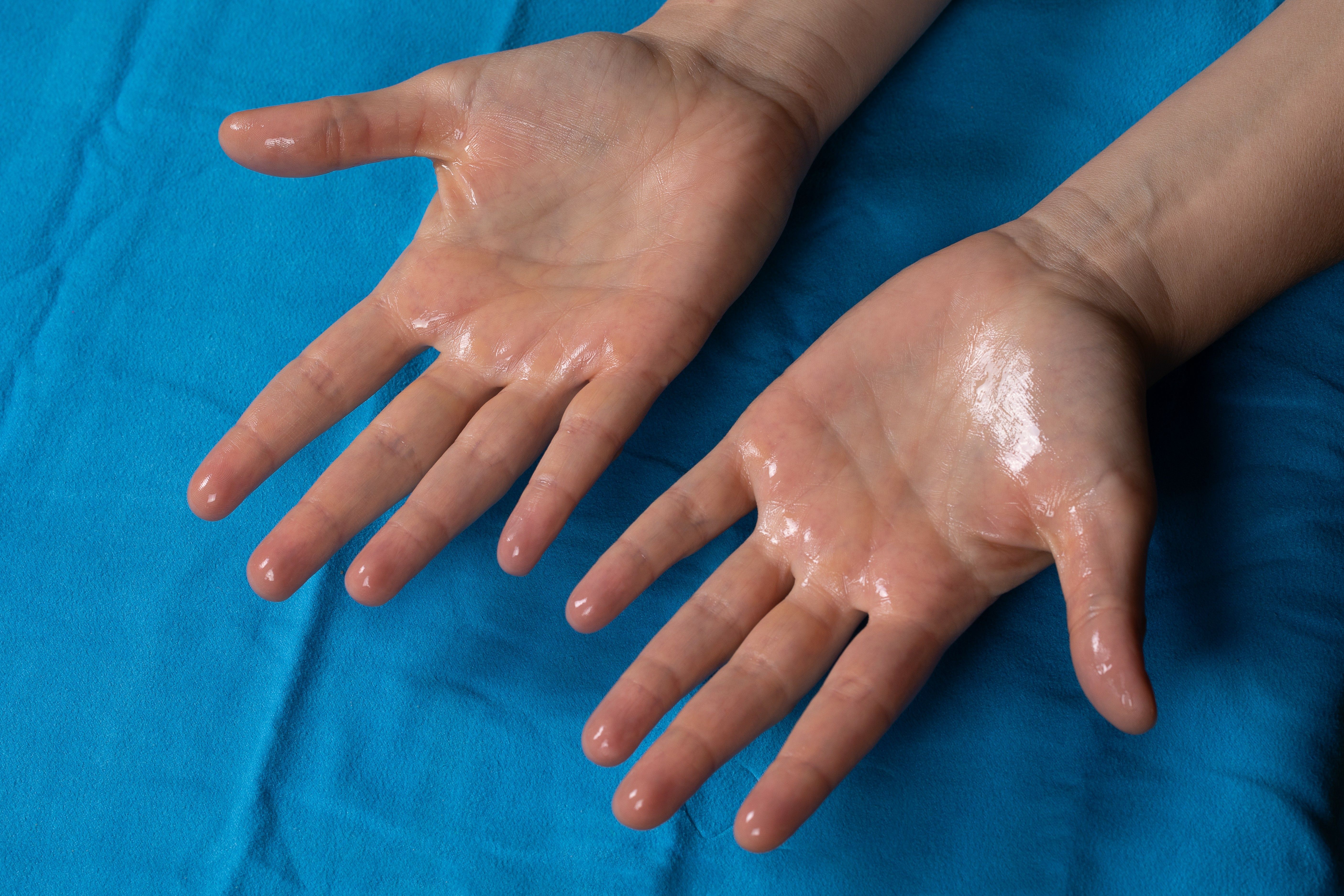- Acne
- Actinic Keratosis
- Aesthetics
- Alopecia
- Atopic Dermatitis
- Buy-and-Bill
- COVID-19
- Case-Based Roundtable
- Chronic Hand Eczema
- Chronic Spontaneous Urticaria
- Drug Watch
- Eczema
- General Dermatology
- Hidradenitis Suppurativa
- Melasma
- NP and PA
- Pediatric Dermatology
- Pigmentary Disorders
- Practice Management
- Precision Medicine and Biologics
- Prurigo Nodularis
- Psoriasis
- Psoriatic Arthritis
- Rare Disease
- Rosacea
- Skin Cancer
- Vitiligo
- Wound Care
News
Article
Microwave Devices Demonstrate Efficacy, Safety in Axillary Hyperhidrosis
Author(s):
The treatments also led to a decrease in the density of immunohistochemistry of sweat glands.
In a study1 evaluating the efficacy and safety of microwave devices in patients with axillary hyperhidrosis and osmidrosis, researchers found that 90% of patients experienced a decrease in hyperhidrosis symptoms, and a majority of patients achieved a reduction in odor.
Alessandro Grandini/AdobeStock

The study, published in the Journal of Cosmetic Dermatology, assessed the efficacy of microwave therapy, a non-invasive and relatively new therapy in the hyperhidrosis landscape. Researchers Tan et al noted that the energy and long-term efficacy of microwave devices have not yet been clinically validated due to the lack of research for this indication.
A total of 20 patients with an axillary hyperhidrosis diagnosis and an Hyperhidrosis Disease Severity Scale (HDSS) score of at least grade 3 enrolled in the study. All participants were adults between the ages of 18 and 50 years old who presented with symptoms of osmidrosis and armpit sweating yet had not undergone treatment of any kind for these symptoms within at least 6 months. Additionally, all patients were required to have a positive bilateral axillary iodine starch test. All patients presented with underarm odor, though this was not considered study inclusion criteria.
Prospective patients were excluded only if they had a history of severe systemic disease and/or allergy to swelling anesthetic fluids.
Prior to and after receiving microwave treatment, all participants underwent sweat and odor assessments. Using hematoxylin-eosin staining and CAM5.2 histological staining, researchers evaluated histological changes in the axillary sweat glands. Using the Visual Analog Scale (VAS), they also assessed the severity of axillary odor and used the Odor-5 subscale and Young-Jin Park grading to determine the noticeability of odor and the effectiveness of treatment with regard to odor presence.
Treatment efficacy was also determined using HDSS grading, and psychological and quality of life changes were tracked using a psychological status symptom checklist (SCL) and the Dermatology Life Quality Index (DLQI).
Before treatment, all patients underwent photography, and their bilateral axillary were lubricated and then anesthetized using lidocaine, epinephrine, and sodium bicarbonate. Swelling anesthetic was injected into both the lateral axillary wall and unilateral axilla.
The MiraDry microwave device was then used in combination with a bioTip treatment head in order to avoid thermal damage to the skin while also reducing negative pressure to the treatment region. Throughout the treatment process, participants were asked to identify burning, pain, or tingling; if these sensations were identified, the device was switched to cooling as opposed to heating.
After treatment, ice packs and ibuprofen were offered to participants for pain and side-effect reduction. Participants were then instructed to avoid excessive movement or friction of the treatment area while maintaining twice-daily underarm cleansing routines.
Follow-up visits were completed 30 days and 3, 6, 9, and 12 months after treatment. At 12 months post-treatment, all participants used subjective scoring to evaluate their odor and sweat symptoms based on their satisfaction or lack of satisfaction as a result of receiving the treatment.
Following treatment, researchers noted a significant reduction in HDSS grading from baseline. In fact, 90% of patients’ HDSS grading had decreased from a grade 3 or 4 to below grades 1 and 2. Additionally, in accordance with VAS, odor reduced to 50% or less in 75% of patients.
Statistically significant improvements were also noted in Young-Jin Park classification and Odor-5 scoring at each consecutive follow-up visit.
Quality of life and psychological improvements were notable as well with statistical significance. At baseline, the proportion of patients experiencing moderate to severe quality of life impacts due to their hyperhidrosis was 70%. After treatment, this had decreased to 25%. Before treatment, SCL scores averaged 113.5. Post treatment, the average score had decreased to 94.
Furthermore, both the intensity of histopathology and the number of sweat glands had reduced significantly after treatment.
Adverse effects of the microwave treatment were mild in nature and were mainly thermal-related tissue damage. Most adverse effects resolved within 5 weeks of treatment initiation.
“We think that even though the cost of MiraDry treatment is more than the rest of the modalities the long lasting or even permanent results present an advantage,” according to Tan et al. “Based on the fact that the sweat glands originate from embryonic tissue and are not renewable, the treatment's long-term efficacy can be speculated. In the future, we will continue to follow the efficacy of follow-up participants to confirm the long-term effectiveness of the therapy.”
Reference
- Tan Y, Huang W, Liu J, et al. The application of microwaves in axillary hyperhidrosis: Curative effect observation of a pathological examination over 1 year. J Cosm Dermatol. Published online August 7, 2023. doi:10.1111/jocd.15909
Newsletter
Like what you’re reading? Subscribe to Dermatology Times for weekly updates on therapies, innovations, and real-world practice tips.











